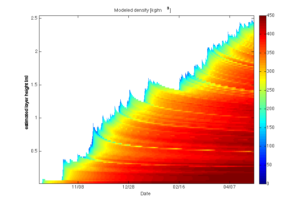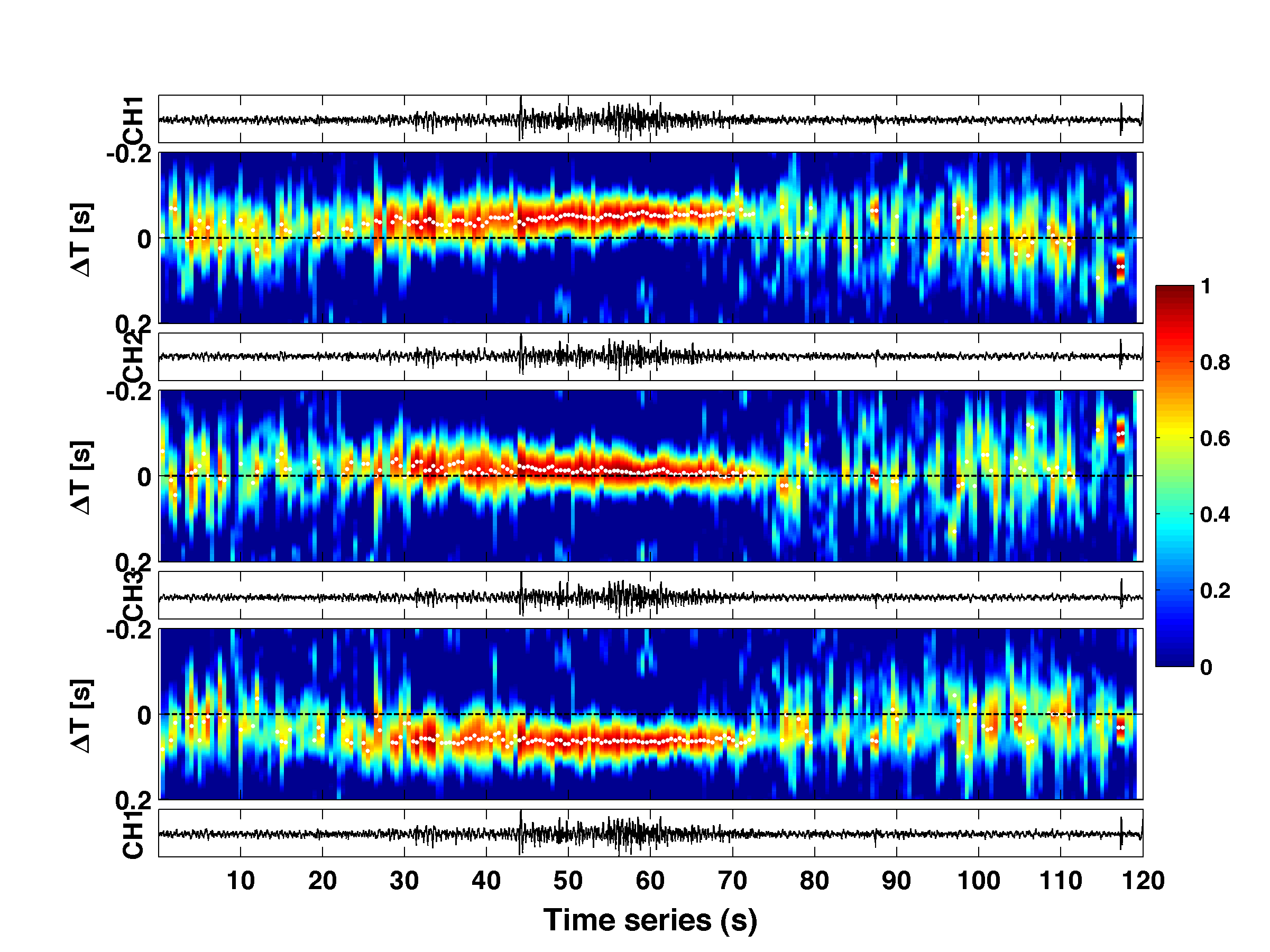Direct action avalanche forecasting with SNOSS

The SNOw Slope Stability (SNOSS) model is a simple one-dimensional avalanche forecasting model comparing the overburden shear stress caused by new snow to the strength throughout the snowpack [Conway and Wilbour, 1999]. The underlying theory of SNOSS is to approximate density within the snowpack using a settlement and densification model, then estimate strength from the density at a given depth. Regional avalanches are expected to occur when the stress from the new snow exceeds the strength of snowpack. Model uncertainties are produced from scatter in the strength-density relationship and the uncertainty in the estimated snowpack density.
SNOSS has been applied at Snoqualmie Pass, WA and Milford Sound, NZ previously, and we are currently tuning the model for Highway 21 in Idaho. Improvements to SNOSS can be made with new high precision tools available to researchers that can measure the strength directly, such as the SnowMicroPenetrometer. This work is in collaboration with the Idaho Transportation Department avalanche forecasters (ITD) based in Lowman, ID.
Researchers
Scott Havens, Bill Nicholson, HP Marshall
Funding
Idaho Transportation Department, Research Division, 11/2010-5/2012
Snow avalanche detection using infrasound

Infrasound is sound below the threshold of human hearing in the 1-20 Hz range. Avalanches emit infrasound signals in the 1-10 Hz region and due to the low frequencies, the signal can travel for large distances. We are developing instruments and processing techniques to use infrasound for avalanche detection and location. This will help avalanche forecasters monitor regional avalanche activity remotely, providing information about slope stability. Improved avalanche timing information is helping to improve operational forecasts and our SNOSS modeling project (see above). Infrasound is currently used operationally by avalanche forecasters at Teton Pass, WY and Little Cottonwood Canyon, UT to determine when and where avalanches occur in their most problematic slide paths.
Researchers
Scott Havens, Bill Nicholson, Jeff Johnson, HP Marshallers
Funding
Idaho Transportation Department, Research Division, 1/2012-12/2014